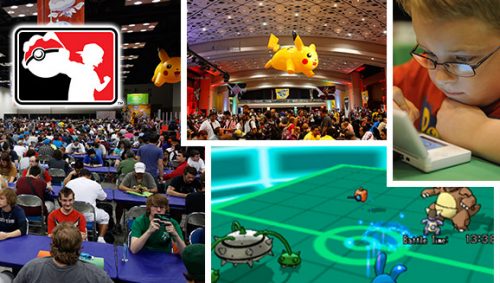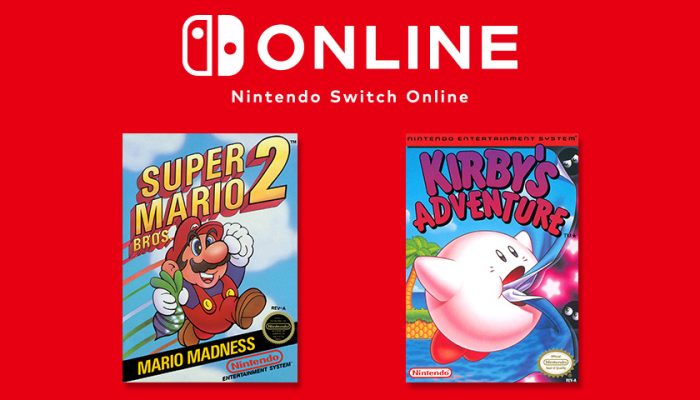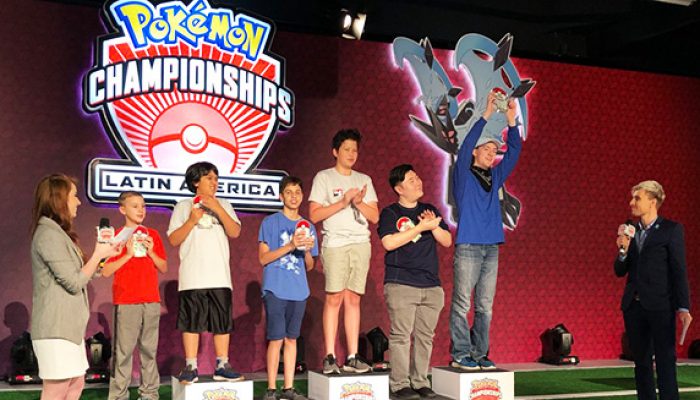 And they did not mention IV-breeding and the usefulness of Everstone (Pierre Stase) and Destiny Knot (Nœud Destin).
And they did not mention IV-breeding and the usefulness of Everstone (Pierre Stase) and Destiny Knot (Nœud Destin).
☆ NintendObs Weekly – Monday, May 18, 2015 – Sunday, May 24, 2015.

Making the Jump to Video Game Competitive Play
Everything you need to know to be prepared for your first live battle.
Version française ici : Élevez votre équipe à un niveau compétitif ! 😉
May 15, 2015
Battling, whether it’s against a wild Pokémon, a Trainer, or a member of the Elite Four, is a fundamental aspect of any Pokémon video game. Battles are fun, and they require you to understand the tenets of Pokémon strategy to succeed. However, the battling you do during your adventure isn’t quite the same as the kinds of battles you will face in competitive play. There are lots of differences that can catch you unprepared. Understanding the particulars of competitive Pokémon Battles is an important first step in getting ready for your first tournament.
If you think you’re ready to make the jump to playing in Play! Pokémon competitions or one of the Online Competitions hosted at the Pokémon Global Link, read on.
Battle Format
In Play! Pokémon tournaments, as well as many Online Competitions, all of the battles are Double Battles. That means that each Trainer has two Pokémon on the field at once. With four Pokémon in play at the same time, Double Battles are significantly more complex than Single Battles. You will probably have had a brush with these types of battles during your adventures, but you likely didn’t consider reworking your entire team for them. But that’s exactly what you’ll have to do to have success in competitive matches!
Unlike the Double Battles in your adventure, the maximum number of Pokémon that will compete in a tournament match is reduced to four from the normal six. Also, every one of your Pokémon has to be different—you can’t include two Bisharp in your party, for example. At the beginning of a competitive match (but after the Team Preview), you and your opponent will both choose four Pokémon that will be available during the upcoming battle. The other two Pokémon will sit out. Choosing the four Pokémon to battle with is an important decision—you’ll have to analyze your opponent’s Team Preview and consider your own strengths and weaknesses, as well as what tactics your opponent might use against you.
Team Preview
Prior to the beginning of each battle, Trainers will be allowed a small amount of time to get a look at the opponent’s Pokémon, called the Team Preview. If you intend to take notes during your match, this is a good opportunity to strategize about which Pokémon you might be facing.
The Team Preview shows all six of the Pokémon on the opponent’s team, but bear in mind that they will pick only four Pokémon to battle with. There could be a decoy in there to make you think that they will be employing a certain strategy, but that Pokémon might not end up in battle. In the end, the best-case scenario is that you choose four Pokémon that can handle any combination of Pokémon that your opponent sends out. There may not be a perfect solution, but that imperfection is what allows the game to change and stay fun.
The Clock
Unlike battles in your adventure, the time you have to choose the right move is limited. The move selection clock starts as soon as the last turn is over—it will be displayed on the screen so that you know exactly how much time you have to choose your next action. If you fail to select your moves in time, each Pokémon will use the first move listed in its move set. (If you select a move for your first Pokémon but not your second, the first Pokémon will use the move you chose.)
In addition to a timer for each round, there’s an overall battle clock. It runs constantly throughout the battle, including while you’re choosing your attacks and during each turn’s action. This clock ensures that a match doesn’t drag on for too long and that tournaments run quickly and smoothly. If the battle clock runs out during a match, the Trainer who has the most useable Pokémon remaining is the winner. If each Trainer has the same number of Pokémon remaining, then a winner is determined by the average amount of HP remaining over all of the Pokémon brought to battle. The third tiebreaker is the sum of HP of all the Pokémon on each team.
Most players won’t have to worry about the clocks, but it’s good to know what the clocks are for. Very few players will need the full amount of time each turn, and few matches will actually use the entire match timer.
Attack Effects
In Single Battles, Trainers might not notice that many of the effects of attacks are extremely important in Double Battles. For example, there are many attacks that hit more than one target, and attacks that hit every Pokémon in play. Moves such as Rock Slide and Heat Wave fall into the first category—they will do damage to every one of your opponent’s Pokémon, but will leave your Pokémon untouched. These attacks would not appear to be preferable to other attacks in Single Battles, but obviously have a greater impact in Double Battles. Note that wide-ranging attacks do less damage in Double Battles than they do in Single Battles—don’t be surprised when these attacks don’t appear to be doing quite as much damage as you’re used to.
Attacks such as Earthquake and Surf, however, will strike every Pokémon in play, including allies. The upside is that these attacks tend to do a lot of damage, but the downside is that you have to prepare for the possibility that an ally will be targeted as well. For that reason, a lot of Pokémon in the Double Battle format will know the move Protect, letting it avoid taking damage when its partner Pokémon uses a wide-ranging attack.
Then there are moves that have little to no effect in Single Battles, but can be hugely valuable in Double Battles (as well as Triple and Rotation Battles). Moves such as Light Screen and Quick Guard have increased effectiveness because they apply to the Trainer’s entire team. And Helping Hand boosts the power of an ally’s next attack—a move that will do nothing in Single Battles.
If you’re having difficulty figuring out the range and target of a move, read its description very carefully. You can often glean from it which Pokémon will be affected by the attack. For example, if a move will hit multiple targets, its description will often use the phrase “opposing Pokémon.” For example, the description of the Air Cutter move is: “The user launches razor-like wind to slash the opposing Pokémon. Critical hits land more easily.” A single-target move will frequently refer to a “target” in its description, such as the Aerial Ace attack: “The user confounds the target with speed, then slashes. This attack never misses.” When in doubt, take lots of notes and memorize which attacks are effective against which targets!
Pokémon Partnering
The effect of wide-ranging attacks will also shape which two Pokémon a Trainer sends into battle at the same time. For example, Flying-type Pokémon are immune to Ground-type attacks such as Earthquake; you’ll see combinations such as Talonflame next to Excadrill. Similarly, a Pokémon that knows the Dry Skin or Water Absorb Ability will gain HP when hit by a Water-type move, which makes it a perfect partner for a Pokémon using Surf.
The concept of finding Pokémon that are well-matched for battling on your team is of critical importance to competitive play. It deserves much more coverage than this article can offer—look forward to a future article discussing this topic in depth.
Held Items
Unlike in a typical Pokémon adventure, where there aren’t really any restrictions about what items Pokémon are allowed to hold, there are different rules in competitive play. On your team, only one Pokémon can hold a specific item. For example, only one Pokémon can hold a Choice Scarf; the other five Pokémon have to hold something different. It will be important to keep this rule in mind when figuring out which Pokémon would be a good fit to hold which items.
Furthermore, items that would ordinarily be consumed during battle (such as Berries) are returned to the Pokémon at the end of the match. You don’t have to worry about giving your Pokémon another Chesto Berry if it was used to wake up a Pokémon in its last match. It’s a minor point, but if you shied away from using Berries during your adventure because it was a hassle to give another Berry to a Pokémon every time one was used, understand that this won’t be the case in competitive play.
Raising Competitive Pokémon
Much of the work necessary to be a successful competitive Pokémon Trainer happens before you sit down for your first battle. Raising your Pokémon to be as effective as possible takes time and requires an understanding of each Pokémon’s strengths and weaknesses. The first thing to note is that not all Pokémon, even of the same kind, are alike. The Garchomp you include in your party could be drastically different than the one your opponent has in theirs. And this goes beyond the moves it knows, its held item, and even its Nature.
To begin with, the potential stat growth of each Pokémon is unique for each Pokémon you’ll encounter. You can find out what kind of potential a Pokémon has by visiting a certain person in your game. In Pokémon Omega Ruby and Pokémon Alpha Sapphire, this judge is located in front of the map in the Pokémon Center at the Battle Resort. He will tell you which stats have the maximum potential for a specific Pokémon. One good way to find competitive Pokémon is to use sneaking to encounter wild Hidden Pokémon. Look for Pokémon that have high potential by looking at the DexNav—each star represents a stat that has maximum potential. (A Pokémon with three stars may have even more than three stats with maximum potential!)
Obviously, you want to maximize your Pokémon’s stat growth, too. There are three ways to improve your Pokémon’s potential stat earning: 1) battle other Pokémon (especially while holding items such as the Power Band); 2) have your Pokémon consume items such as Protein and Calcium; and, 3) have your Pokémon use Super Training. These methods will improve your Pokémon’s base stats, the underlying factors that affect the growth of your Pokémon’s stats (HP, Attack, Defense, Special Attack, Special Defense, and Speed) as they grow. You can see the progress of your base stat growth by checking out the graph in Super Training.
This is perhaps the most difficult part of being a new competitor—the realization that some Pokémon are simply stronger than others, either through luck or the way they were raised. Seek Pokémon with high natural potential and improve that potential with methods for adding to your Pokémon’s base stats to create the best Pokémon for battling.
Gameplay Guidelines
In most competitions, Trainers are allowed to take notes during matches. It’s entirely your preference whether or not to take notes. You may find it useful to jot down an important bit of information, but remember that the timer is going and you may find yourself feeling rushed if you are writing or referring to your note sheet all the time. Players do not have to share their notes with their opponent, but they do have to share them with a judge, if asked.
Start at small, local competitions if they’re available. Premier Challenges are ideal—they’re designed for new players so the level of competition should be just right to introduce you to competing and how tournaments work. If the first tournament you play at is a large event, like the National Championships, you may be overwhelmed by the crowds and commotion, as well as by the sheer length of the tournament. Also, it can get pretty demoralizing to lose to former National and World Champions every other round. But if you do find yourself sitting down at a major event, enjoy the opportunity and maybe strike up a conversation with your opponent for some tips.
This is a little bit unrelated to building a solid team, but its importance goes beyond just being a nice person. Good sportsmanship is the basic fundamental of Pokémon competitions. Be as gracious in victory as you are in defeat. And let judges resolve conflicts that arise during battle—that’s why they’re there, and working with them will help to avoid hard feelings between you and your opponent. Getting angry at your opponent or at your own performance will lead to you making poor decisions in the short term, and having difficulty learning from your mistakes in the long term.
Battling in competitions is exciting and can bring new challenges to longtime Pokémon players. With a better understanding of what strategies are needed to compete, you can have fun and succeed at your first tournament—and many more to follow!
— Pokémon News
Source: Pokémon.
At NintendObserver, the comments are on Discord.
Click on Community to learn more. 🙂
…
And if you’ve already got yours, click on Pokémon Omega Ruby and Alpha Sapphire for everything you need to know about the games. 😀



